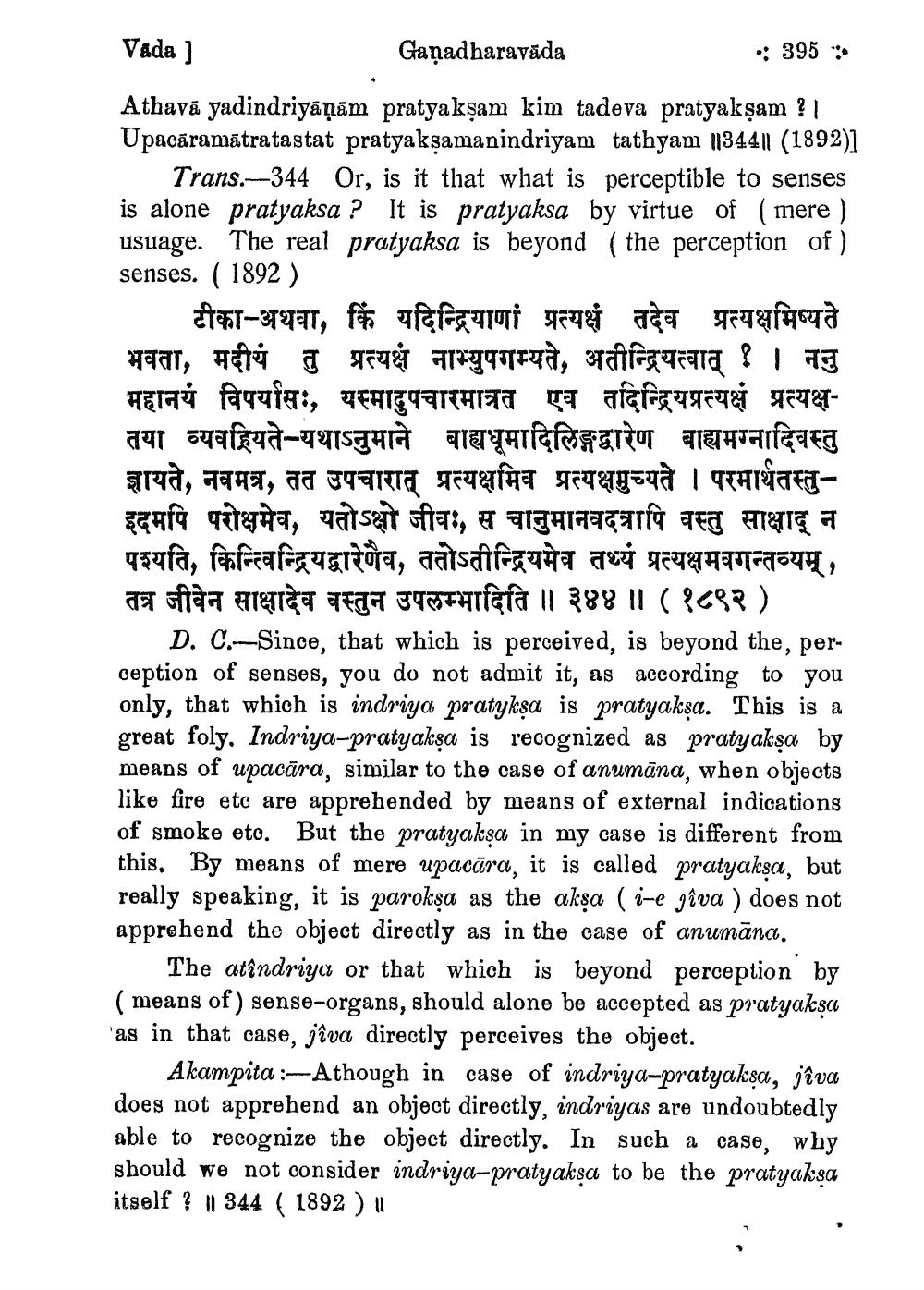________________
Vada]
Gañadharavada
.: 395:
Athava yadindriyāņām pratyakşam kim tadeva pratyakşam ? | Upacāramātratastat pratyaksamanindriyam tathyam 1344॥ (1892)]
Trans.-344 Or, is it that what is perceptible to senses is alone pratyaksa ? It is pratyaksa by virtue of (mere) usuage. The real pratyaksa is beyond ( the perception of ) senses. ( 1892)
टीका-अथवा, कि यदिन्द्रियाणां प्रत्यक्षं तदेव प्रत्यक्षमिष्यते भवता, मदीयं तु प्रत्यक्षं नाभ्युपगम्यते, अतीन्द्रियत्वात् ? । ननु महानयं विपर्यासः, यस्मादुपचारमात्रत एव तदिन्द्रियप्रत्यक्षं प्रत्यक्षतया व्यवहियते-यथाऽनुमाने बाह्यधूमादिलिङ्गद्वारेण बाह्यमग्नादिवस्तु ज्ञायते, नवमत्र, तत उपचारात् प्रत्यक्षमिव प्रत्यक्षमुच्यते । परमार्थतस्तुइदमपि परोक्षमेव, यतोऽक्षो जीवः, स चानुमानवदत्रापि वस्तु साक्षाद् न पश्यति, किन्त्विन्द्रियद्वारेणैव, ततोऽतीन्द्रियमेव तथ्यं प्रत्यक्षमवगन्तव्यम् , तत्र जीवेन साक्षादेव वस्तुन उपलम्भादिति ॥ ३४४ ॥ (१८९२)
D. C.-Since, that which is perceived, is beyond the, perception of senses, you do not admit it, as according to you only, that which is indriya pratyksa is pratyakşa. This is a great foly. Indriya-pratyaksa is recognized as pratyaksa by means of upacāra, similar to the case of anumāna, when objects like fire etc are apprehended by means of external indications of smoke etc. But the pratyaksa in my case is different from this. By means of mere upacāra, it is called pratyakşa, but really speaking, it is parroksa as the aksa (i-e gava ) does not apprehend the object directly as in the case of anumāna.
The atîndriya or that which is beyond perception by ( means of) sense-organs, should alone be accepted as pratyaksa as in that case, java directly perceives the object.
Akampita :-Athough in case of indriya-pratyaksa, java does not apprehend an object directly, indriyas are undoubtedly able to recognize the object directly. In such a case, why should we not consider indriya-pratyaksa to be the pratyaksa itself ? ॥ 344 ( 1892)॥




